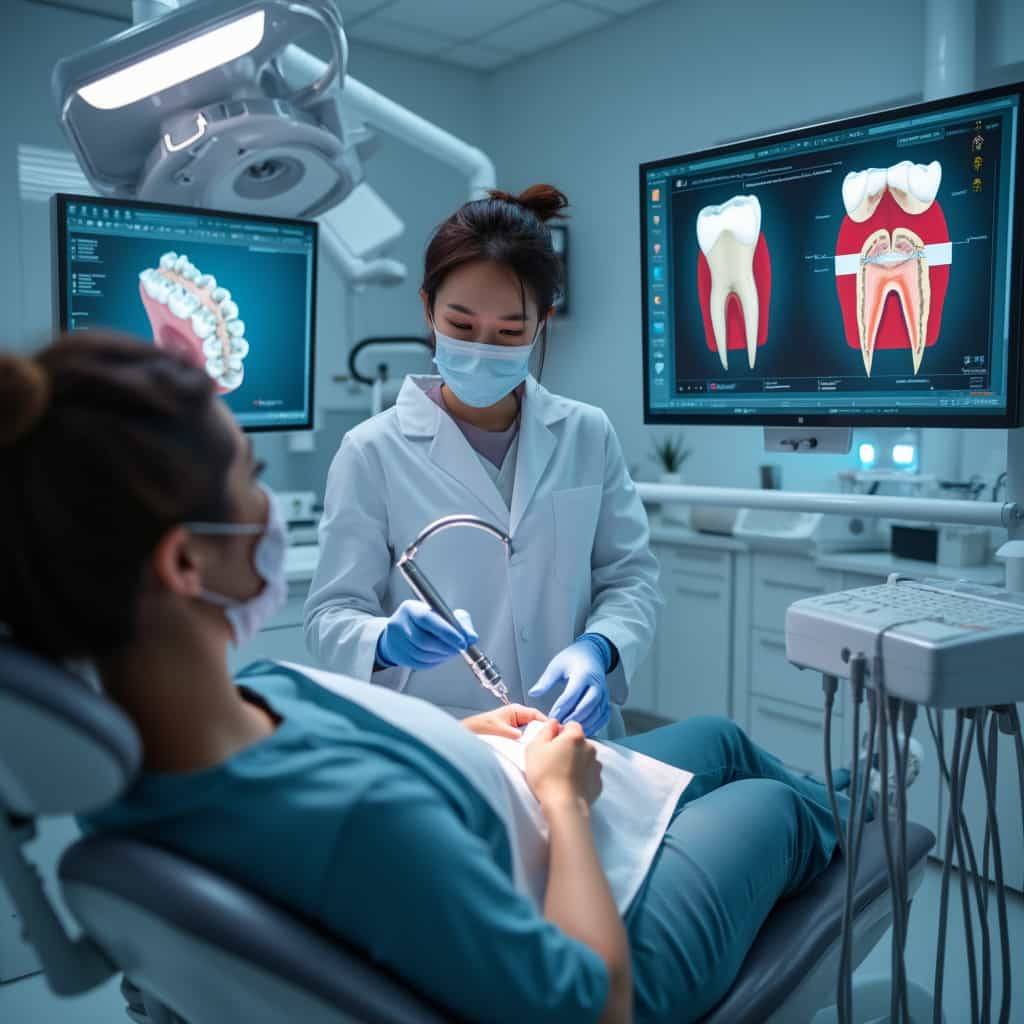Dental implants have dramatically transformed the landscape of dentistry. Once seen as a mere luxury, they are now becoming a necessary treatment to restore smiles and bolster oral health. This procedure involves embedding a metal post into the jawbone, followed by the placement of an artificial tooth. Despite the straightforward description, dental implants are, in reality, complex and technically demanding.
Oral hygiene, though seemingly simple, is deeply intertwined with systemic health. Historical figures, such as George Washington, famously lamented poor dental health impacting their lives and history, showing the timeless importance of good dental care. Proper hygiene includes regular brushing, flossing, and dental check-ups, vital in preventing diseases like periodontitis—an inflammatory condition affecting the tissues surrounding teeth.
The prevalence of dental implant procedures varies significantly across the globe. In developed regions like North America and Europe, the adoption rate is high due to advanced dental care systems and accessibility. In contrast, emerging markets often see lower rates due to economic constraints and limited access to healthcare facilities. However, the gap is gradually closing as awareness and technological advancements penetrate broader demographics.
Recent studies on dental implants have been groundbreaking. Currently, researchers are focusing on biomaterials that can improve osseointegration—the process by which the implant integrates with the jawbone. Innovative surfaces, such as those coated with bioactive molecules, are under experimentation to promote faster healing and better integration, even among patients with less optimal bone quality.
Meanwhile, common issues like alopecia (hair loss), atopic dermatitis, psoriasis, and acne also see new frontiers of research and treatment. Alopecia continues to affect millions worldwide, with psychological impacts that are profound and sometimes debilitating. Traditional treatments have been largely cosmetic, but the advent of stem cell research offers potential hair regeneration treatments that promise more permanent solutions.
Atopic dermatitis and psoriasis are chronic skin disorders that affect significant portions of the population. Treatments often include topical steroids and systemic medications. However, new biologics and JAK inhibitors are looking promising, offering targeted immunotherapies that reduce flare frequency and severity. Historical figures, including Winston Churchill and Joseph Stalin, reportedly suffered from psoriasis, highlighting that such conditions have impacted even the most resilient leaders.
Acne, while often associated with adolescence, can persist into adulthood, affecting self-esteem and social interactions. Recent advances in light therapy, particularly blue and red light treatments, have shown efficacy in reducing inflammation and bacterial proliferation, offering an alternative to traditional medications with fewer side effects.
Returning to the focus on dental care, issues like plaque buildup, tooth decay, and gum disease often underscore poor oral hygiene. These conditions can lead to complications that may necessitate implant treatment. The historical understanding of oral health once lacked the insight we have today on the relationship between oral bacteria and systemic health issues, such as cardiovascular disease.
Expert opinions suggest that as dental technologies evolve, the future of implants looks promising. Dr. Emily O’Connor, a leading dental researcher, notes that “The development of patient-specific treatment plans employing digital dentistry, including CAD/CAM and 3D printing, is set to revolutionize implantology.” These advances not only enhance precision but also significantly reduce recovery time and improve aesthetic outcomes.
In closing, both dental implants and related health treatments signify the continual evolution of medical science, aiming not only to restore function and aesthetics but also to improve overall well-being. As research progresses, the convergence of medical fields will likely yield even more holistic approaches, addressing both the visible and invisible aspects of health.
You may also like
Hair Loss Treatments and Skin Diseases
Hair loss is a global issue affecting millions of men and women worldwide, with distinct patterns and causes between genders. This article delves into current treatments and explores emerging technologies and research in combating hair loss. Additionally, it examines associated skin conditions, including acne, atopic dermatitis, psoriasis, and dental care, outlining the latest in treatment advancements.
Acne: Symptoms, Treatments and Advances in Research
Acne is a common skin condition that affects teenagers and adults worldwide, presenting unique challenges for each group. This article delves into the symptoms and available treatments for acne, alongside exploring emerging studies and innovative approaches in combating this condition. Additionally, it provides insight into related dermatological issues such as hair loss, atopic dermatitis, psoriasis, and advancements in dental care.
Atopic Dermatitis: Symptoms, Treatments and Promising New Research
Atopic dermatitis is a chronic skin condition characterized by inflammation and itchiness. This article explores the symptoms and treatments for atopic dermatitis and psoriasis, offering insights into innovative treatments and ongoing research for these skin conditions.
Elderly Care with Caregivers: Costs and Regional Variations
The increasing elderly population presents growing challenges for families tasked with providing care. Hiring a caregiver has become a practical option, offering various advantages and flexible solutions. This article explores the different aspects of elderly care with caregivers, including cost considerations and regional impacts in choosing this assistance model.
External Hearing Aids: Technologies and Innovations
Hearing aids have undergone a tremendous transformation over the years. This article explores the latest advancements in external hearing aid technologies, their availability across different regions, and innovative devices currently under research. We also delve into the geographical distribution of these devices and delve into expert opinions and common beliefs surrounding them.
Inner Hearing Aids: Technology and Studies
Inner hearing aids, once bulky and conspicuous, have transformed into innovative devices with cutting-edge technology. The development and refinement of these devices have not only enhanced user experience but also broadened accessibility globally. This article delves into the technological advancements, current studies, and geographical trends related to inner hearing aids.
The Rise of Dental Aligners: Revolutionizing Orthodontic Care Across Ages and Regions
This article explores the advancements and applications of dental aligners, with a focus on various methods, treatments, and their suitability for children, as well as novel studies in pipeline.
